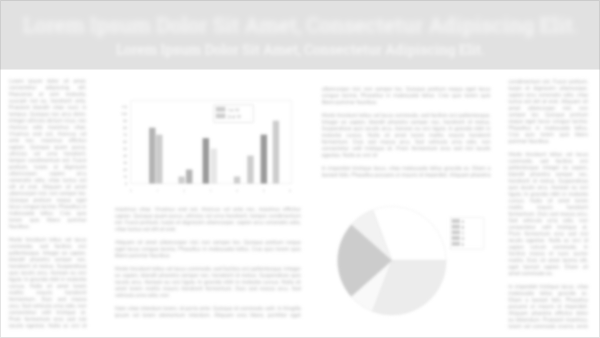Enhancing Interprofessional Communication in High-noise Operating Rooms: Solutions for Accessibility and Team Efficiency
- Expanding Interprofessional Health and Social Care Teams and Collaborative Practice
Effective communication in the operating room (OR) is essential for ensuring safety, precision, and team collaboration.1 However, noise levels in the OR frequently exceed safety thresholds, creating barriers to clear communication and increasing cognitive strain.23 These challenges disproportionately affect team members who are D/deaf or Hard of Hearing (DHH) or have auditory sensitivities, further widening accessibility gaps.4,5 A survey of 225 OR personnel—spanning nurses, scrub techs, anesthesiologists, surgeons, and other key roles— revealed systemic challenges: 11% (24/225) reported experiencing baseline hearing loss, 57.2% (115/201) reported daily hearing challenges in the absence of baseline hearing loss, and 87% (195/225) desired improved communication tools.
Thematic analysis highlighted recurring barriers, including background & equipment noise, unclear speech, and discomfort advocating for better communication practices. Miscommunication within the OR can also ripple outward, impacting broader interprofessional care teams.
Implementation
We propose an AI-driven communication system to isolate critical speech from ambient noise while integrating seamlessly into OR workflows. Existing technologies, including noise-canceling devices and sound amplification systems, have been applied in OR settings but lack the ability to dynamically adapt to fluctuating noise levels or integrate effectively into complex workflows.6 These limitations leave the unique needs of DHH individuals and those with subclinical hearing loss unmet, particularly in high-pressure, fast-paced surgical environments where precision and clarity are critical. Featuring wearable technology and a central audio hub, this system offers customizable noise cancellation and speech enhancement to ensure accessibility for all team members, including those with hearing sensitivities. Unlike traditional aids, it adapts in real-time and integrates seamlessly into dynamic OR environments.
Evaluation Plan
Development involves collaboration with interprofessional stakeholders, including OR nurses and allied health professionals, to refine usability and ensure compatibility with existing workflows. Feasibility testing in simulated OR environments will assess user adoption, communication clarity, and reductions in communication-related errors. Key metrics include stakeholder feedback, ease of integration into OR workflows, and impact on communication efficiency.
Outcome(s) and Significance
This innovation addresses longstanding communication barriers in noisy, high-stakes surgical environments. By improving safety, efficiency, and equity, it empowers diverse interprofessional teams and enhances patient outcomes. This scalable solution has broader implications for advancing accessibility and collaboration in clinical care settings beyond the OR.
Learning Objectives
1. Identify key barriers to effective communication in the OR, based on findings from survey data and thematic analysis.
2. Examine the limitations of current communication technologies in addressing noise and accessibility challenges.
3. Explore the role of AI-driven solutions in enhancing speech clarity and accessibility while reducing cognitive load in high-noise environments.
4. Evaluate strategies for integrating innovative communication technologies into interprofessional OR workflows.
References:
1. Murthy VH, et al. Noise pollution in operating rooms and its impact on staff performance. J Health Acoust. 2019;12(3):45-52.
2. Berglund B, Lindvall T, Schwela DH. Guidelines for community noise. World Health Organization; 1999. Available from: https://www.who.int/docstore/peh/noise/guidelines2.html.
3. Sammarco D, et al. Managing acoustic challenges in healthcare environments. Health Environ J. 2020;18(4):233-240.
4. Gill SA. Effectiveness of noise-canceling technology in surgical settings. Noise Health. 2021;23(1):15-21.
5. Reeves E, Jacobs A. Technological innovations for managing OR soundscapes. Med Eng J. 2023;35(7):401-410.
6. Gill SA. Effectiveness of noise-canceling technology in surgical settings. Noise Health. 2021;23(1):15-21.
Summary Paragraph (50 Words)
This project tackles critical communication barriers in noisy operating rooms using AI-based solutions. By integrating wearable technology and centralized audio systems, it improves speech clarity, reduces cognitive strain, and enhances interprofessional collaboration, fostering safety, accessibility, and efficiency in surgical care while offering scalable solutions for broader clinical environments.
Learning Objectives
- Identify key barriers to effective communication in the OR, based on findings from survey data and thematic analysis.
- Explore the role of AI-driven solutions in enhancing speech clarity and accessibility while reducing cognitive load in high-noise environments.
- Evaluate strategies for integrating innovative communication technologies into interprofessional OR workflows.
References
- 1. Murthy VH, et al. Noise pollution in operating rooms and its impact on staff performance. J Health Acoust. 2019;12(3):45-52.
- 2. Berglund B, Lindvall T, Schwela DH. Guidelines for community noise. World Health Organization; 1999. Available from: https://www.who.int/docstore/peh/noise/guidelines2.html.
- 3. Sammarco D, et al. Managing acoustic challenges in healthcare environments. Health Environ J. 2020;18(4):233-240.
- 4. Gill SA. Effectiveness of noise-canceling technology in surgical settings. Noise Health. 2021;23(1):15-21.
- 5. Reeves E, Jacobs A. Technological innovations for managing OR soundscapes. Med Eng J. 2023;35(7):401-410.







